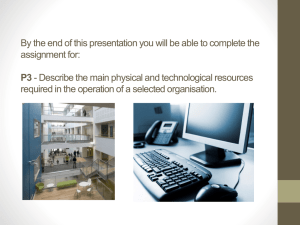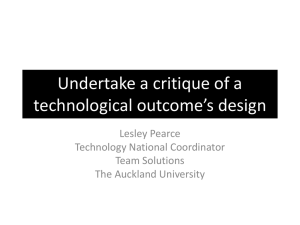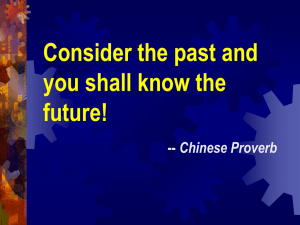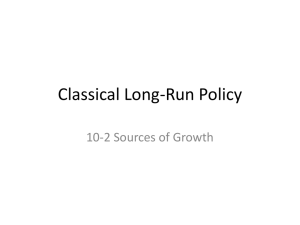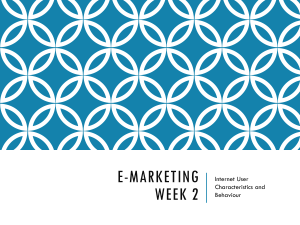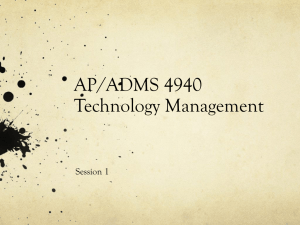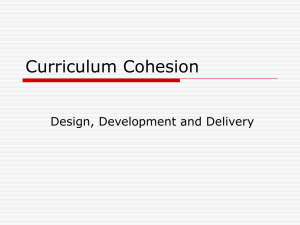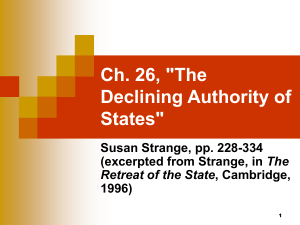BTEC Level 3 Business
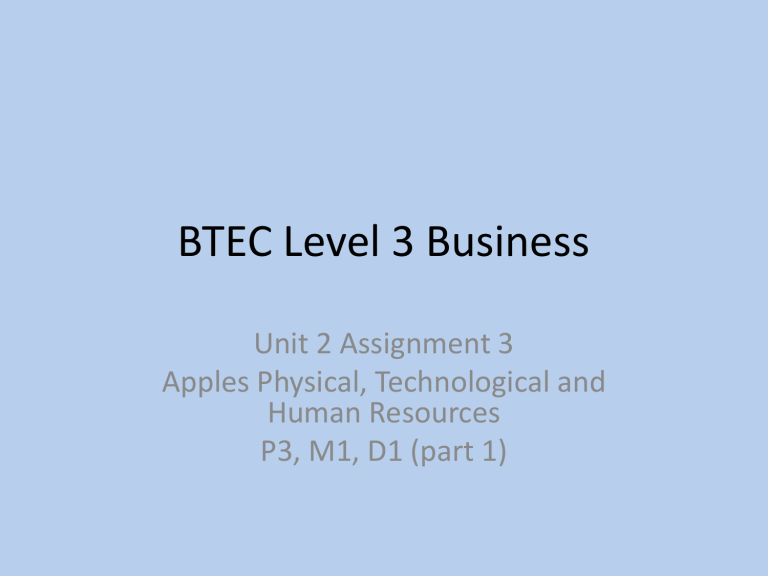
BTEC Level 3 Business
Unit 2 Assignment 3
Apples Physical, Technological and
Human Resources
P3, M1, D1 (part 1)
Business Resources
• As well as human resources a business needs to accurately manage their physical and technological resources
– Physical Resources- these are resources that the business need to carry out it activities.
– Technological Resources- these are not just technological equipment but are resources such as intellectual property
Physical Resources
• Building and facilities- a business will always need a building to operate from, it can be from home to a large warehouse.
• Different types of businesses will have different requirements, e.g. A car park, chiller, stockroom, offices.
Physical Resources
• Materials and waste- these are the materials needed by a business, these will depend on the core activity of the business and what they do. Google needs very different materials to Cadbury.
Plant and Machinery
• Like materials and buildings each business has specific requirements for the type of plant and machinery that it needs.
• For other businesses it may be easier and more cost effective to lease what is needed.
Equipment including ICT
• Equipment is essential for a business to operate smoothly.
• E.g. your teacher is unable to work effectively without a board marker.
• Both traditional and non traditional businesses now incorporate ICT for example Farms may use
ICT to monitor milk supplies
Planned Maintenance and Refurbishment
• All buildings, plant and machinery require regular maintenance and updating.
• Even factories that use flow production 24 hours a day must allow times for checking machines are working properly.
• Building maintenance such as regular cleaning and painting is needed to keep buildings in good condition, clean and safe .
Planned Maintenance and Refurbishment
• Refurbishment is when a business gives a building a new look.
• It can help to keep staff happy.
• A good working environment is likely to make staff happier, work harder and stay with the company longer.
• Refurbishment can help the environment if the new resources are energy saving and eco friendly. E.g. solar panels
Emergency Provision
• The Health and Safety at Work Act (1974) requires the organisation to draw up policies and provision for what should happen in the event in an emergency.
• E.g. fire evacuation procedures.
• Regular audits must take place so new equipment can be provided.
• Employers have a duty of care towards any customers, employees and visitors.
Insurance
• All buildings owned or leased must have insurance.
• Insurance can often cover events such as;
– Flood, fire, earthquake or storm
– Damage to any equipment
– Theft from the building
– Vandalism
– Leaking pipes
– Collision by vehicles.
Insurance
• The type of insurance coverage and the amount of money paid will depend on the individual policy the business takes out.
• Employers’ liability insurance; is compulsory by law. It provides insurance for employers in cases where they must pay an employee or their family as a result of an accidental death, bodily injury, or disease as a result of an individuals employment
Insurance
• Public Liability insurance; must be paid by employers to cover any payments to the public for injuries suffered or property damage.
Security
• The building must be made secure and looked after, even when employees have gone home.
• Some businesses will employ full time security staff to do this.
• Other organisations will use security cameras and alarms
• There are now schemes such as ‘Beating
Business Crime’ and the national ‘Business
Watch’
P3
For your chosen business you need to describe the physical resources that the business needs. Be as specific as possible to ensure it is not a general statement.
Remember to include;
– Buildings and Facilities
– Materials and Waste
– Plant and Machinery
– Equipment and IT
– Refurbishment
– Insurance
– Security
– Emergency Provision
Technological Resources
• Technological resources are more than just equipment.
• Computer hardware, such as modem and monitor is a physical resources and is treated as such.
• Technological resources in this instance are things like software, music or text.
• These resources are owned, like physical resources, and have to be managed in the same way.
P3- Part 2
Technological Resources
Technological Resources
• Technological resources can be considered in four main areas;
– Intellectual property
– Accumulated experience
– Skills, software licensing
– Patents and copyright.
Intellectual Property
• Intellectual property rights allow people to own ideas and have rights concerning what happens to these ideas, including how often they are used, what they are associated with and if they have permission to be copied.
• These can include;
– Design, drawings, text, music, video.
Accumulated Experience and Skill
• Accumulated experience means experience gained over a number of years when a person has come across lots of different issues to do with the job
– So that the level of experience in the business can grow.
• Experienced employees are more likely to be able to do a good job in an organisation and should be managed carefully.
Accumulated Experience
• It is important to build up a person’s skills but organisations must ensure they do not create a situation where only one person has the skills.
• Why might this be?
Software Licenses
• Many businesses invest money into software and use it on a daily basis.
• The software that is used e.g. word, excel is licensed to Microsoft, money must be paid to Microsoft for using the software.
• Licenses may allow the software to be installed on one computer or many computers.
• If a license is not bought the company is breaking the law.
• What are the implications of this?
Patents and Copyrights
• It can be difficult and costly to protect technological resources.
• Legislations can help protect these resources but it is often difficult to prove that someone has used your idea.
• It was reported by the Alliance Against
Counterfeiting and Piracy that UK industry lost
£10 billion due to counterfeiting in 2002
• A patent gives an inventor the legal right to stop anyone using their invention without their permission.
P3
• To complete your P3 describe the technological resources that your chosen business has.
M1- Explain how managing resources can improve the performance of a business.
• You need to split this task into 3 sections;
• Human
• Physical
• Technological
• You need to explain how managing each of these resources can make a business more successful.
M1- Explain how managing resources can improve the performance of a business.
• Human Resources-
– what does it mean ‘manage human resources?’
– Why is this important to your business? (What does it help them do? Think efficiency/ profitability/ competitiveness
– Managing human resources can help.... To improve their performance by....
• Physical Resources
– -what does it mean ‘manage physical resources?’
– Why is this important to your business? (What does it help them do? Think efficiency/ profitability/ competitiveness
– Managing physical resources can help.... To improve their performance by....
• Technological Resources-
– what does it mean ‘manage technological resources?’
– Why is this important to your business? (What does it help them do? Think efficiency/ profitability/ competitiveness
– Managing technological resources can help.... To improve their performance by....
D1 part 1 evaluate how managing resources can improve a businesses performance
• For this half of D1 you need to evaluate, what are the costs and benefits of managing resources?
Types of resources Cost Benefit
Human
Physical
Technological

